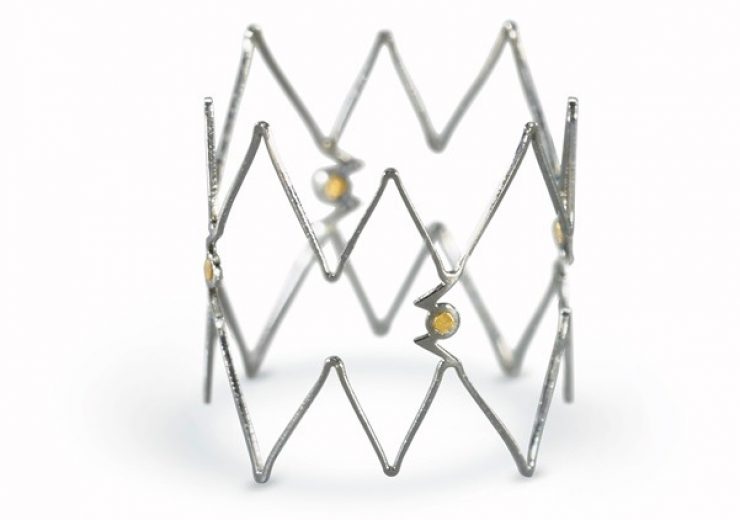Tack Endovascular System is a specialised implantable dissection repair device designed to optimise treatment of PAD and CLI

Philips Tack Endovascular System. (Credit: Koninklijke Philips N.V.)
Philips has unveiled positive two-year results from Tack Optimised Balloon Angioplasty (TOBA) II below-the-knee (BTK) clinical trial of its Philips Tack Endovascular System.
Tack Endovascular System is a specialised implantable dissection repair device designed to optimise the treatment of Peripheral Artery Disease (PAD) and Critical Limb Ischemia (CLI).
CLI is a condition that occurs when an obstruction in an artery greatly reduces the blood flow, resulting in painful wounds, debilitating rest pain, recurring ulcers and severe infection.
The system is purpose-built to provide precision treatment of peripheral arterial dissections following balloon angioplasty in either above- or below-the-knee therapeutic interventions.
The implant uses minimum metal to minimise vessel inflammation, promote healing, improve outcomes, preserve future treatment options for PAD and CLI patients.
Philips said that its Tack Endovascular System is the only vascular implant to receive US Food and Drug (FDA) pre-market approval for BTK interventions.
Also, it is the latest addition to its peripheral vascular portfolio that includes advanced interventional imaging systems for precision guidance.
Philips image guided therapy devices senior vice president and general manager Chris Landon said: “This new data further demonstrates the value of the Tack Endovascular System for repairing dissections and optimising post-angioplasty outcomes in a challenging patient population.
“Dissection repair following balloon angioplasty has a positive, long-term value for both clinicians and patients alike.
“The implant is an important part of our complete procedural solutions to improve existing procedures and expand treatment options for PAD and CLI patients.”
The two-year TOBA II BTK is the first BTK investigational device exemption (IDE) study to enrol patients with 100% dissected vessels.
In the study, 73.6% of the patients experienced freedom from clinically-driven target lesion revascularisation (CD-TLR) and did not require a repeat procedure for the treated artery.
Also, 94.7% of the complex CLI patient population, associated with high rates of amputation and mortality, experienced target limb salvage or freedom from major amputation.
According to a patient questionnaire that assesses activity, pain and overall health, patients had more control of their health and increased improvement in mobility.
The study data also demonstrated that two-year treatment using Tack Endovascular System offered sustained improvement in the quality of life of patients with PAD and CLI.
TOBA II BTK clinical trial co-principal investigator George Adams said: “The global endovascular community is diligently working to better understand how to restore blood flow in small limb vessels, promote healing and ultimately preserve limbs for people with CLI, one of the most vulnerable and critical patient populations.
“These positive two-year data reiterate the clinical importance of below-the-knee dissection repair and validates the sustained durability of Tack-optimised interventions.”
